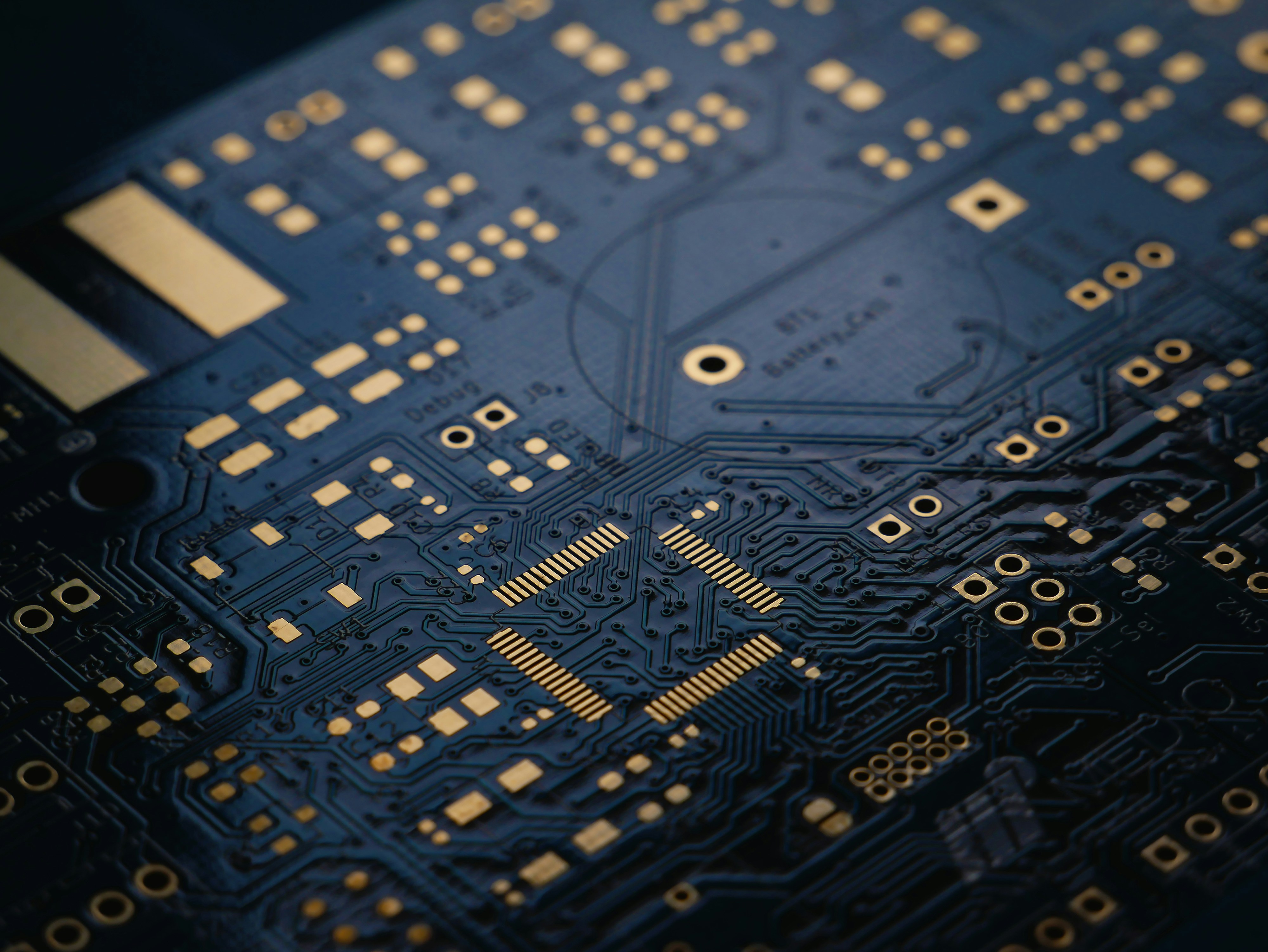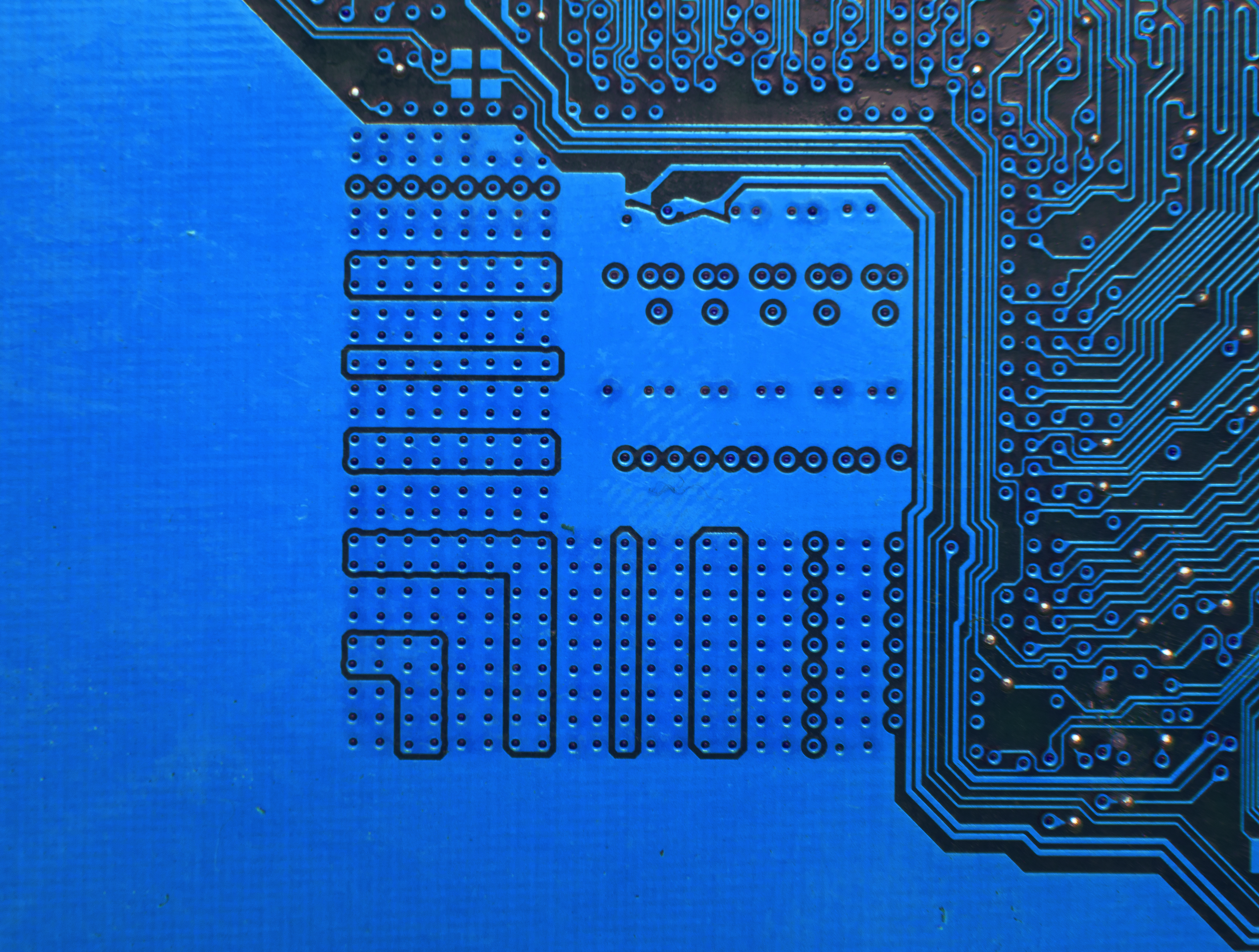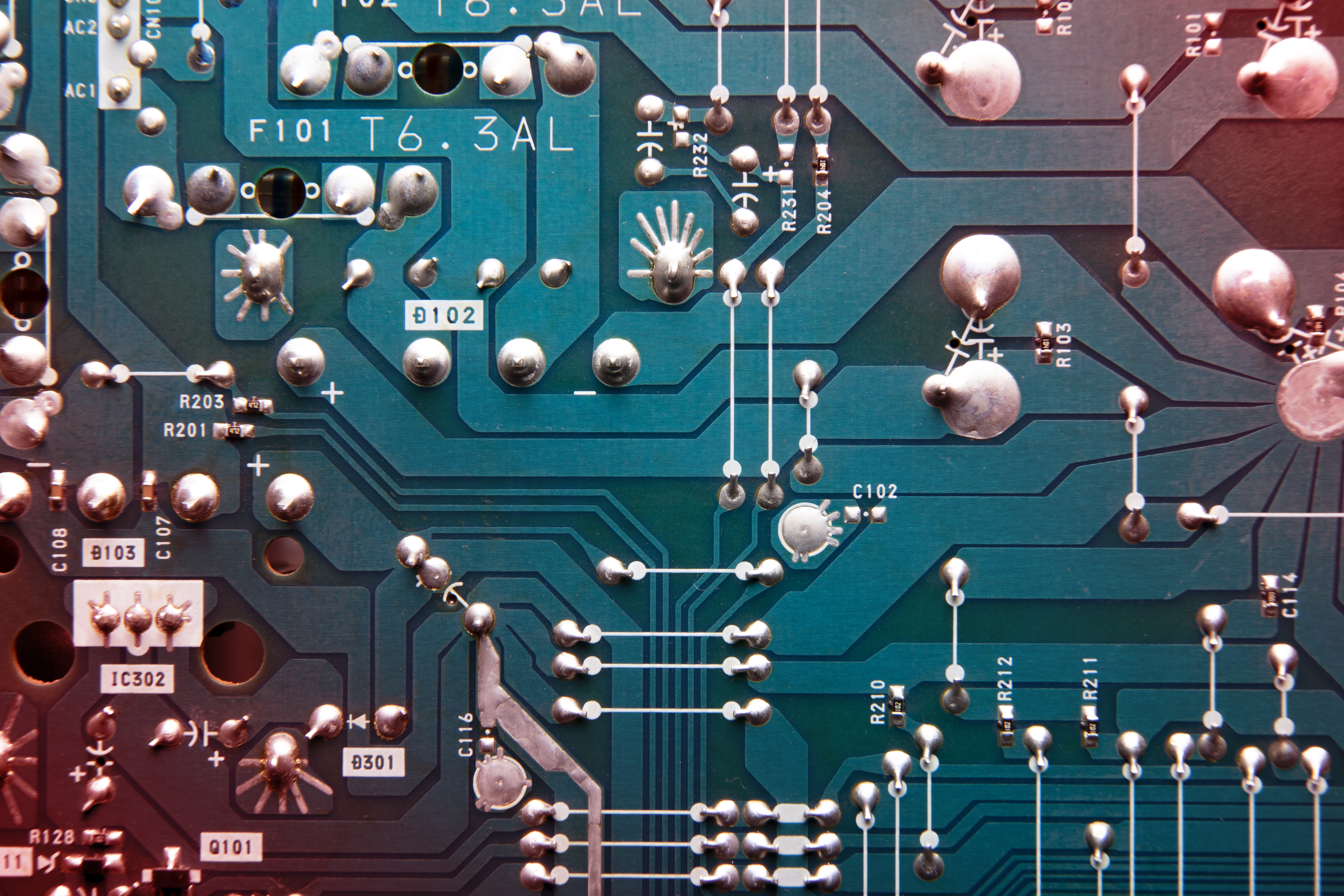With years of experience in the industry as a manufacturing leader with an above-the-board reputation, Candor is the preferred PCB manufacturer for products from prototype to production. We cater to custom requests, prototype needs, large-volume PCB manufacturing, and the highest quality commercial and industrial manufacturing.
Our clientele demands products in line with cutting-edge technology and standards, manufactured with eco-friendly resources, and inspected under strenuous PCB requirements. We offer competitive pricing and ingenious solutions regardless of your needs or industry.
Candor sets industry standards that set us apart from the competition.
- Extremely Fast Prototyping
- Unique Technology
- Streamlined Processes
- Landless Vias
- Great Customer Service
- Consistent R&D Investment
Clientele seeking top-quality PCB manufacturing know what to expect from Candor. Our thorough processes ensure that we meet or exceed PCB standards. With several certifications that promote the reliability of our products and services, our engineers provide you with the exact product you need.
Get in touch today and learn how Candor is revolutionizing PCB manufacturing.
Single, Double Side, Multilayer Boards
Single-Sided PCBs
Single-sided PCBs are the traditional, common type of board. There is a single conductive copper layer that sits above the substrate, with electrical components soldered (or placed) on one side of the board. The board has an etched circuit visible on one side, and since these boards have a single conducting layer, the paths cannot overlap and thus take up a lot of space.
Single-sided PCBs are suitable for low-density design requirements. These PCBs are used for basic, low-cost electronic instruments such as LED lighting boards, radios, power supplies, timing circuits, and calculators.
Single-Sided PCB advantages:
- Easy to manufacture
- Cost Effective
- Preferable for Low-Density Designs
- Easy to Repair
- Simple to Design
Double-Sided PCBs
Double-sided PCBs feature a thin conducting material on both the top and bottom of the board. There are holes in the board that allow the metal parts to connect from one side to the other. PCBs use through-hole technology or surface mount technology to connect the circuits on either side, and lead components can be installed through pre-drilled holes and soldered to pads on opposite sides. Surface mount technology is the precise placement of electrical components, and these two methods allow Double-sided PCBs to be much more versatile than Single-sided options.
Double-sided PCBs are used widely in power monitoring, cell phone systems, HVAC applications, UPS systems, and more.
Advantages of using Double-sided PCBs include:
- Compact size
- Lower cost
- Improved flexibility
- Increased circuit density
- Better for advanced electronic systems
Multi-Layer PCBs
As per their namesake, Multi-layer PCBs feature two or more copper layers. Any board featuring at least three conductive layers is considered a Multi-layer PCB, and these boards are designed with double-sided conductive layers divided by insulating material in a PCB ‘sandwich.’ These boards are laminated and bonded together under high temperatures and pressure to ensure there are no air gaps and the final product is stable.
Multi-layer PCBs are used in laptops, mobile phones, medical equipment, GPS trackers, and other complex circuits.
Advantages of Multi-layer PCBs include:
- Compact Size
- Robust Features
- Higher Levels of Design Flexibility
- Preferred for High-Speed Circuits
Explore Single, Double-Side, and Multilayer-Boards.
Flexible and Rigid-Flex Printed Circuit Boards
Flexible PCBs
Flex-printed PCBs are designed for flexibility, allowing them to easily twist or bend without causing damage to existing circuitry. These boards are made with a flexible substrate material, such as polyester film or polyimide, with conductive traces etched in. These boards are preferred in applications where space is limited and flexibility is necessary, such as medical equipment, cell phones, and aerospace technology. They are lightweight, durable, and have high heat resistance.
Advantages of Flex-printed PCBs include:
- Compact and/or Lightweight Design
- Cost-effective and Space-saving
- Improved Signal Integrity
- High Reliability
- Easy to Assemble
- Eco-Friendly
Rigid-Flex PCBs
Rigid-flex PCBs combine the features of rigid and flexible PCBs. They are designed with conjoined sections of rigid and flexible material, as a single board. The rigid sections provide stability while the flexible sections allow the board to conform to any required shape or enclosure. Rigid-flex PCBs are used within unique, limited space, and where reliability and extreme conditions necessitate their inclusion.
Advantages of Rigid-flex PCBs include:
- Better Signal Integrity
- Space Saving Features
- Cost-Effective Design
- Improved Reliability
- Lower Assembly Time
Explore Flexible and Rigid-Flex-Boards.
Heavy Copper Circuit Boards
Heavy Copper PCBs are defined by a copper weight greater than 3 oz per square foot, above the standard 1 oz per square foot. These PCBs carry a higher current and feature thick copper tracks and planes. The thickness of Heavy Copper PCBs enables the board to handle high current loads, making these PCBs ideal for use in industrial controls, automotive applications, and power electronics. Heavy Copper PCBs can dissipate heat more efficiently than standard PCBs.
Advantages of Heavy Copper PCBs include:
- Improved Thermal Conductivity
- Better Durability
- High Current-Carrying Capacity
- Reduced Assembly Time
- Increased Flexibility
- Higher Layer Count
Explore Heavy Copper Circuit Boards.
Impedance Controlled Boards
Impedance-controlled boards are PCBs that ensure that impedance mismatches are within tolerable limits. This design feature, called Controlled Impedance, is formed by an inner conductor separator and insulator alongside all the components’ proportions to regulate the impedance level of the coaxial cable.
The impedance value of the source must match the impedance value of the load, otherwise, a portion of the signal’s energy will be reflected to the source, degrading quality. With technology that improves time signals, PCBs can be crafted with controlled impedance to help transfer maximum signal power from source to load. Impedance-controlled boards can vary the amount of power to the speed of a signal in a circuit, which is necessary for some applications.
Explore Impedance Controlled Boards.
Metal Backed Copper Boards
Metal-backed PCB, also called Metal Core PCBs or Thermal PCBs, are a type of printed circuit board with a metal material as the base for the heat spreader. Thick metals such as aluminum or copper cover one side of the PCB and the metal core is used as a reference to the metal, somewhere on the back of the board. The purpose of a Metal-backed PCB is to redirect heat away from critical board components and toward less crucial areas such as heatsink backings or the metallic core.
MCPCBs carry many advantages, such as their ability to integrate a dielectric polymer layer with high thermal conductivity. They have a lower thermal resistance and can transfer heat up to 9 times faster than traditional PCBs. They are ideal for heat-generating components and applications that require extreme temperatures and conditions.
RF/Microwave PCBs
Radiofrequency PCBs or RF PCBs are a fast-growing sector of PCB manufacturing, with a complex array of dizzying options. RF PCBs are any circuit board that operates at a frequency above 100MHz, while anything about 2GHz is a Microwave PCB.
RF circuit boards and Microwave PCBs operate at different radio frequencies and are used for their different communication signals. Any application that requires transmitting or receiving radio signals will use an RF or Microwave PCB, such as radar installations and cell phones. RF PCBs have numerous applications including sensors, robotics, security, and other wireless technologies. As new technologies change and push limits, the demand for RF and Microwave boards increases.
It’s important that you find a trustworthy RF PCB manufacturer that can ensure these boards are fabricated with high-quality standards. In numerous bustling industrial and commercial sectors, there’s no room to settle for manufacturers that cannot make quality, timely RF PCBs.
Sequential Blind/Buried Vias
Blind Vias are vias that go from the outer layers of the PCB to the inner layers by way of plated through holes. Buried Vias are buried within the inner layers of a board and can’t be seen after manufacturing of a PCB. Blind and buried vias are used in high-density PCBs and interconnect PCBs.
The need for sequential blind and buried vias emerged in PCB fabrication because of the limited space available in multilayer PCBs. If a client wishes to achieve more function and place high-performance parts during assembly, more circuit lines must be added to a board. These vias allow the manufacturer to utilize a PCB surface area in a better way as technology rapidly develops. As products become smaller, thinner, and more complex, circuit boards that are smaller, lighter, and thinner become more necessary.
Explore Sequential Blind/Buried Vias.
Aluminium PCBs
Aluminium or Metal Core PCBs use a metal core as the base material, differentiating these PCBs from boards made with traditional fiberglass. The metal core improves heat dissipation and thermal management which is needed for high-power applications. Aluminium PCBs are commonly used in power supplies, automotive electronics, LED lighting, and any application where high temperatures are a consideration.
The metal core of these PCBs can be made of aluminium, copper, or some combination of both, sandwiched between the dielectric material and copper traces. This improves the stability of the board’s mechanical support, prevents damage from thermal expansion, and reduces electrical noise.
Advantages of Aluminium PCBs include:
- Improved Thermal Conductivity
- Enhanced Signal Performance
- Better Durability
- Reduced Development Cost
HDI PCBs
High-Density PCBs contain a higher number of components and traces per area. They are superior to traditional PCBs and are designed to handle high-frequency signals and complex electronic circuits. These High-Density PCBs are constructed with advanced techniques such as blind vias, buried vias, and micro vias to ensure the creation of dense interconnections between layers. High-Density PCBs are used in a variety of applications including medical devices, military components, and telecommunications devices. High-Density PCBs are constructed for devices where reliability, space, and precision are paramount.
Advantages of High-Density PCBs can include:
- Improved Signal Integrity
- Reduced Production Costs
- Better Reliability
- Enhanced Power and Efficiency
- Greater Density of Connections
Explore HDI Printed Circuit Boards.
Thick Printed Circuit Boards
Thick Copper Printed PCBs are characterized by an advanced structural thickness that allows them to be used for larger outputs and optimization of thermal management. The thick copper in these PCBs allows for greater current loads and better heat dissipation and is commonly double-sided and multilayer.
Thick Copper PCBs allow the combination of fine layout structures on the outer layers, as well as thick copper on the inner layers. They have better elongation performance and are not limited to processing temperature. This means that Thick Copper PCBs can be used in devices that require high melting points, such as welding, and are not brittle at lower temperatures. They are necessary in corrosive atmospheric environments because the copper PCB forms a strong protective layer.
Advantages of Thick Printed PCBs include:
- Adaptable for a Variety of Household Appliances
- Suitable for High-Tech Products
- Better for Military Application
- Better Core Components
- Longer Service Life
- Improved Size Reduction
Explore Thick Printed Circuit Boards.
Quick Turn Around PCBs
Candor handles custom PCB orders with quick turnaround times and exceptional quality. By choosing Candor you make your life easier with a high-quality product and minimal production and shipping times. We can work with you on tight deadlines and unusual development loads.
Quick-turn PCB prototypes are necessary when a client demands improved production speed. These PCBs are ideal for projects in which time is the key factor, such as for products and technologies in competitive marketplaces.
Advantages of Quick-Turn PCB Prototypes include:
- Higher Flexibility
- Speedy Turnaround
- ROI Longevity
- Ideal Design Process For Smaller Quantities
- Significantly Less Production Time
- Reduced Production Changes
- A Wider Window For Pre-Production Adjustments
- Reduced Production Changes Avoid Manufacturing Delays
Explore Quick Turn Around PCBs.
Ball Grid Array – BGA
BGA Assembly mounts ball grid arrays onto a PCB via the solder reflow process. These surface-mounted components use a wide array of solder balls to make advanced interconnections. When the solder balls melt, they establish interconnections when the PCB passes through the solder reflow oven.
Advantages of Ball Grid Array Assembly include:
- Improved Thermal and Electrical Performance
- Efficient Use of Space
- Reduction of Board Thickness
- Minimizes PCB Damage Possibilities
- Suitable for Smaller Packages
- Improved Solderability
- Lower Thermal Resistance
Explore BGAs – Ball Grid Array.
Custom PCBs
Custom PCBs are integral to the devices that serve various technologies and industries. Candor strives to meet and exceed the expectations of our clients by providing custom PCBs and prototypes designed by our engineers.
Custom PCBs are available in several different styles, including:
- Single-layer board
- Double-sided board
- Multilayer board
- Heavy copper circuit board
- Flexible board
- Rigid-flex board
Depending on the device you are building, you will need a different style of PCB. We work alongside you to build the perfect PCB that precisely fits your electronic device. Candor Custom PCB manufacturing services provide everything you need to create your board.





